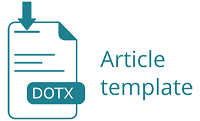STUDENTS' PERCEPTIONS OF SPOTIFY FEATURES IN ENGLISH SPEAKING SKILLS AT SMAN 8 KEDIRI
DOI:
https://doi.org/10.51158/0f0eq008Keywords:
Speaking Skills, spotify, students' perceptionAbstract
The application of technology-based digital media is an important effort in improving students' English language skills, particularly in speaking. This study aims to analyze students' perceptions of Spotify features in English-speaking skills at SMAN 8 Kediri and its impact on the quality of learning. This study used a quantitative approach with a survey method. Data were collected through a questionnaire distributed to 293 students from grades 10, 11, and 12. The questionnaire consisted of statements related to Spotify features and speaking skills components. The data were then analyzed using percentage calculations and category scale interpretation. The results showed that the song lyrics feature on Spotify was considered very helpful by students in speaking skills, especially in pronunciation. Students stated that reading and following song lyrics helped them understand correct pronunciation and felt their vocabulary increased. However, students also faced several obstacles, such as difficulty understanding pronunciation and limited vocabulary. Based on these findings, it can be concluded that the application of Spotify as a learning medium has a positive impact on students' understanding, activeness, and motivation in learning speaking skills. Therefore, it is recommended that teachers provide additional support such as transcripts and vocabulary lists to optimize learning outcomes through Spotify in the classroom.










